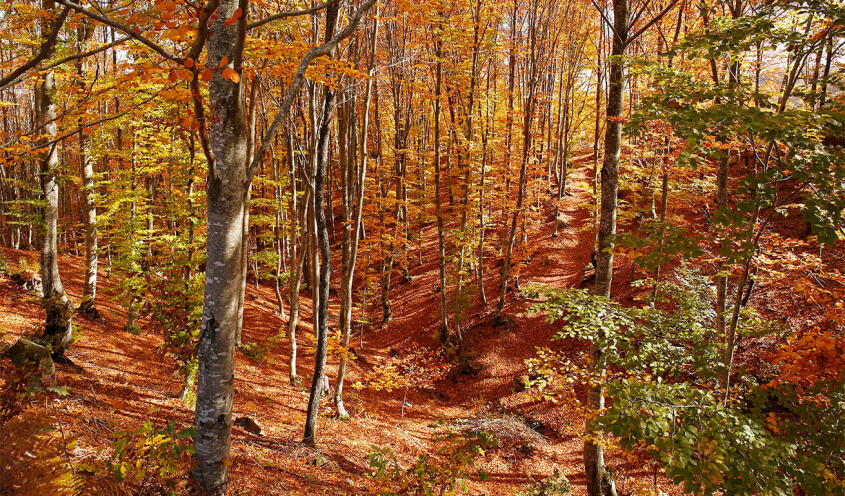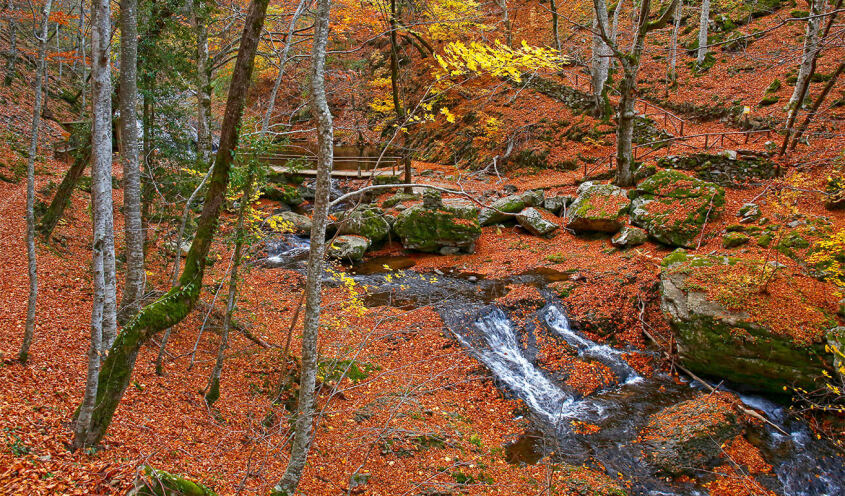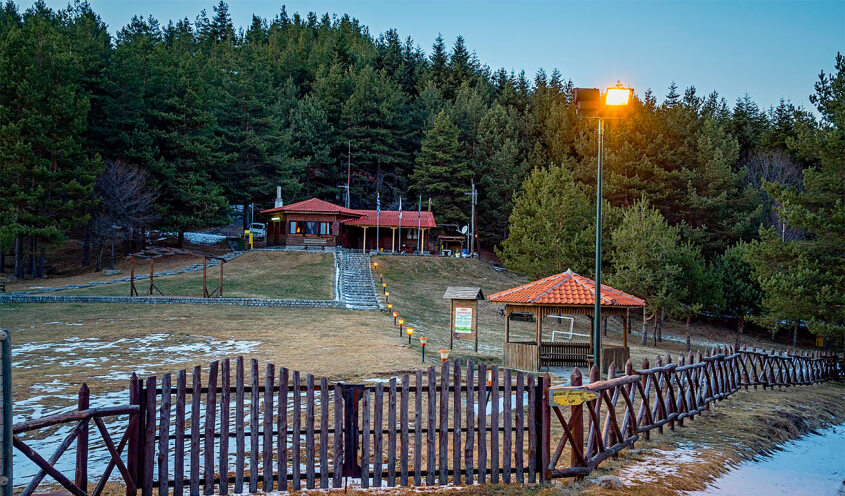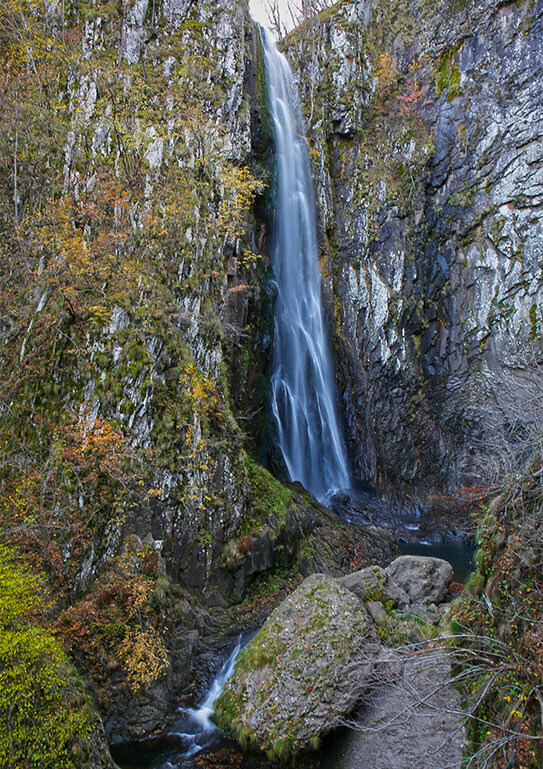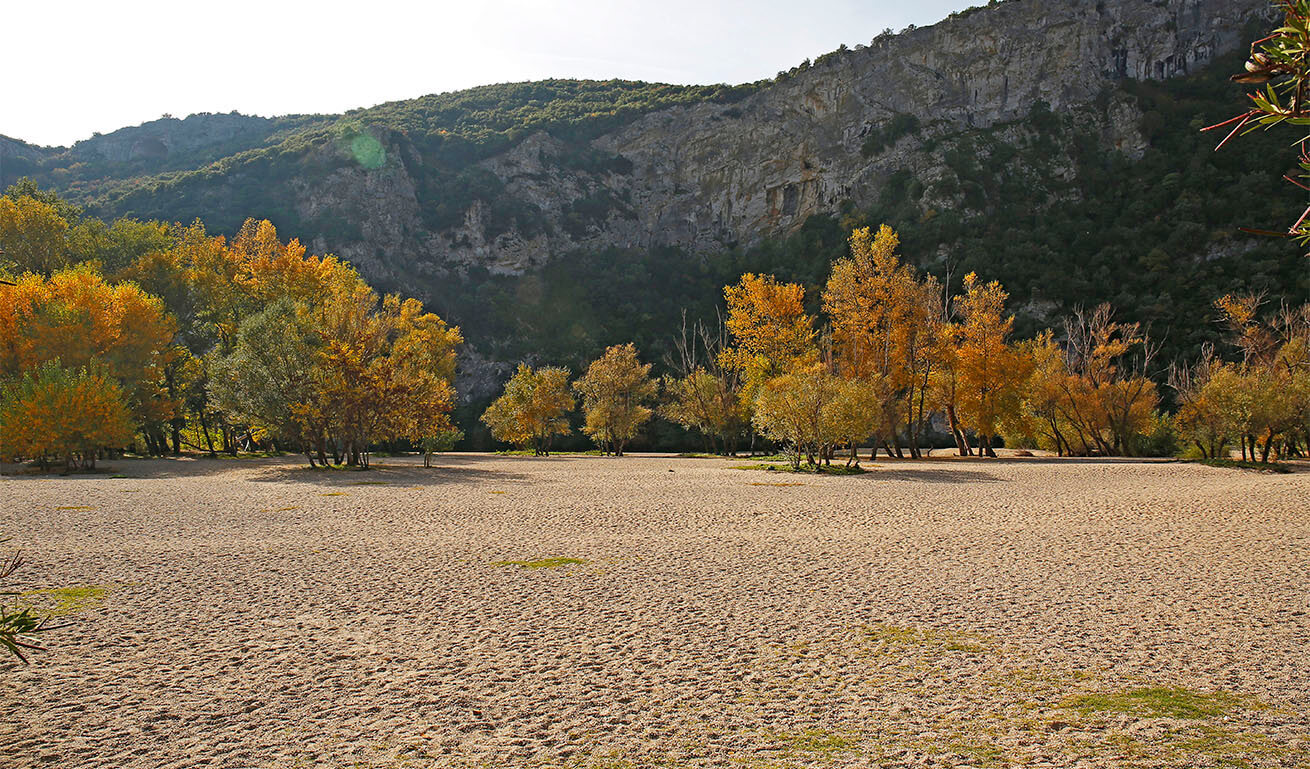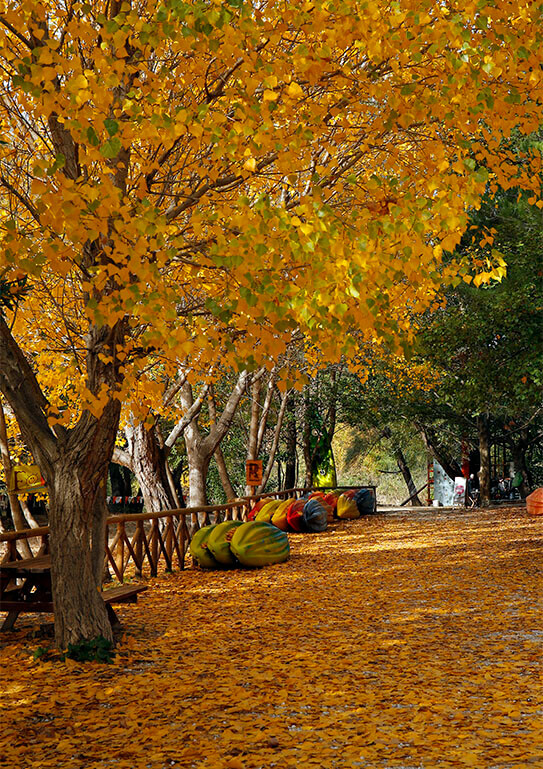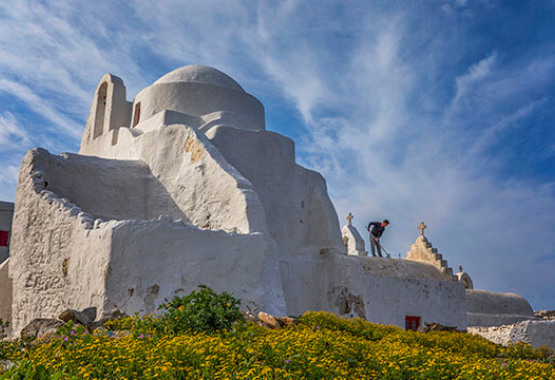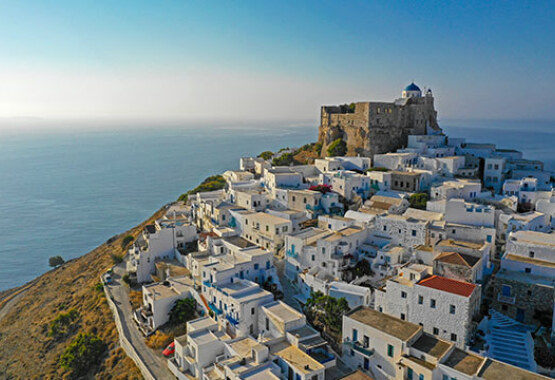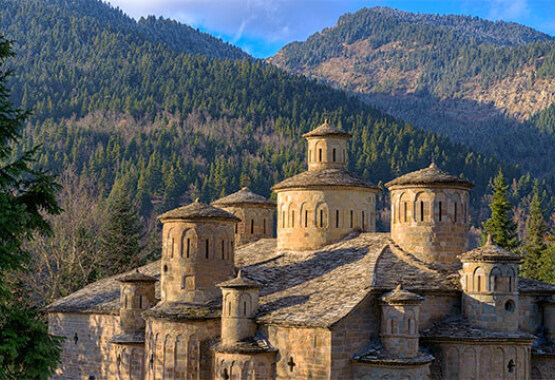
Beautiful Wild Landscapes of Xanthi
Dense forests, waterfalls and endless meandering rivers
From the wooded landscapes on the Rhodope mountain range to the beaches washed by the Thracian Sea and from the meanderings of the Nestos River to the Vistonida wetland, the change of scenery is very fast and impressive to visitors of the region of Xanthi.The Rhodope mountain range is the northern natural border of Greece with Bulgaria, and it is reason enough for you to visit the area of Xanthi. Mt. Haidou or Mt. Erymanthos is in the central part of the mountain range, and it includes the particularly beautiful Haidou Forest - a biodiversity paradise. Tsichla Woods (a part of Haidou) has been designated a Natural Monument since 1980. It is a forest of huge beech trees, which haven’t been logged for centuries, and it has remained one of the most pristine woods in Europe, providing habitats to a huge variety of flora and fauna. The Leivaditi or Trachoniou Waterfall, is the largest one in the Balkans, and its waters drop from a height of 40 metres or so. It is about 55 kilometres from the city of Xanthi, and with a fairly easy access, as long as you are willing to walk downhill to the waterfall and -of course- walk uphill on your way back. However, the route itself and the view is well worth the effort.
The Erymanthos Forest Village is a complex of 12 wooden houses, built by Xanthi’s Forestry Department on a 1,350-metre elevation, a few kilometres after Livadeitis village, and they are available for rent to those of you who wish to feel the magic of wild nature. From here starts a quite passable dirt road of about 12 kilometres that leads to the Beech Forest in Tsichla, and also a hiking trail, about 4 kilometres long, which reaches -through beech and pine trees- the top of Gyftokastro, the highest peak of the Koulas-Haidou mountains (1,827 metres), from where the view is panoramic and breathtaking.
The Traditional Community of the Sarakatsani people, in between Livadeitis Village and the Forest Village, indicates the presence of these nomads here in Haidou Forest. In the past, the Sarakatsani people used to cross the largest part of mainland Greece, along with their herds. The site hosts the annual Sarakatsani Antamoma (i.e. the coming together of Sarakatsanoi), a summer festival held yearly.
Kosynthos and Kompsatos Rivers as well as their tributaries rise in the Rhodope mountain range, and in order to meet the transport & communication needs among villages, a number of stone bridges were built in the area. From the 50+ bridges which existed in the early 20th century, some of them built by skilled masons from Epirus and Western Macedonia, only a few remain today in a good condition, such as the three-arched bridge of Xiropotamos River, between Medousa and Kottani (difficult access), and the single-arched Zelenitska Bridge, between the villages of Temenos and Satres.
Nestos River has a length of over 240 kilometres, out of which 130 are on Greek territory. The river rises in the Rila Mountains in Bulgaria and flows into the Thracian Sea, between the regions of Kavala and Xanthi. Explore the river’s course through Xanthi; it’s a sight not to be missed and parts of it are protected by international environmental treaties. From the fringes of Toxotes village until Stavroupoli village, the Nestos Straits [aka Thracian Tempi] wind their way in a narrow valley about 20 km long, where the river meanders through beautiful thick vegetation that includes quite a few rare species. The best way to explore the breathtaking landscape is to go hiking along the riverbank, but if you’re not really up to this, you can follow the paved road from Galani to Komnina and Stavroupoli, which offers amazing views from higher elevations. At the river’s mouth, the Nestos Delta is a wetland of great importance, as it provides shelter to migratory birds and is home to rare endemic European species such as the Caucasus pheasant [Phasianus Colchicus Colchicus]. In the past, the area was covered by the largest wetland forest in Greece, the Kotza Orman or Mega Forest, a part of which still exists and can be visited.
Last but not least, visit Lake Vistonida, on the boundary of Xanthi and Rhodope regions. The lake’s area is 45 km, and it is an impressive wetland, as well as an outstanding natural landscape.
